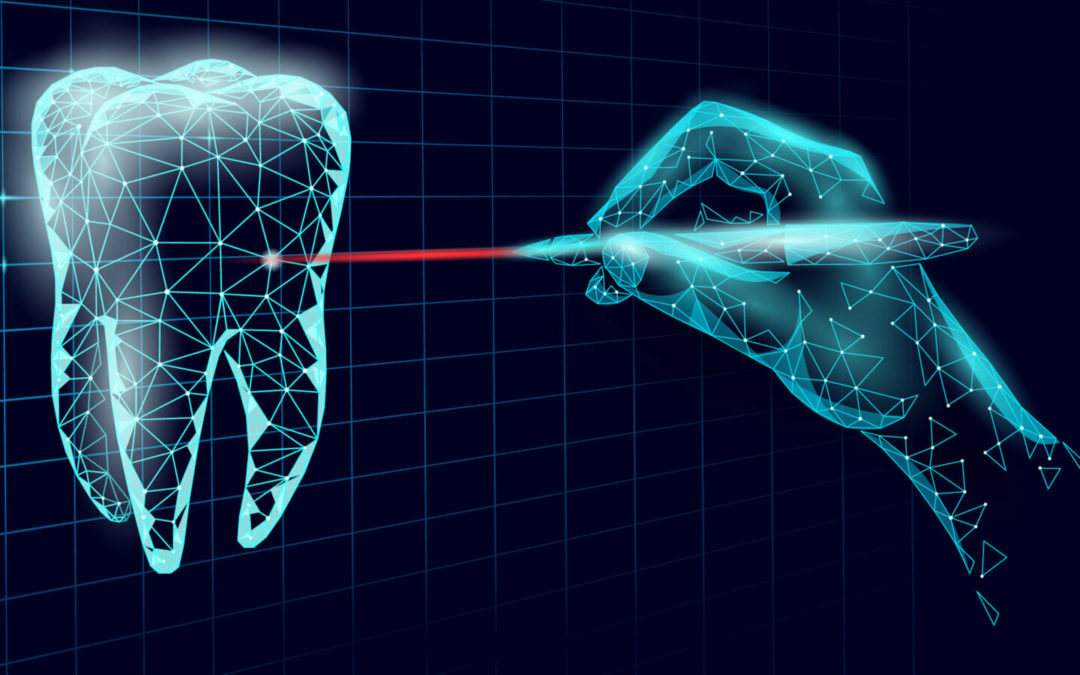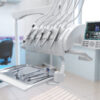Smiling is contagious, and it’s no secret that a great smile can boost your confidence. But did you know that modern dentistry has taken this to the next level? With digital dentistry, orthodontics are changing for the better! Digital Smile Design (DSD) has arrived, and it’s transforming the way we think about dental treatments. In this blog post, we’ll explore what digital dentistry entails, its benefits and drawbacks, how it’s revolutionizing orthodontics as we know them today, tips on finding a digital dentist near you – all so you can be prepared to make an informed decision when choosing between traditional or modern dentistry techniques. Let’s dive in!
What is digital dentistry?
Digital dentistry is a modern dental approach that utilizes advanced technology to improve the accuracy, speed, and effectiveness of dental treatments. It replaces traditional methods with computerized systems and digital imaging tools.
One such example of digital dentistry is Digital Smile Design (DSD), an innovative technique for designing a patient’s ideal smile using 3D modeling software. This allows patients to have an active role in their treatment process by visualizing what their new smile will look like before any work begins.
Another key feature of digital dentistry is intraoral scanners that capture detailed images of teeth without the need for messy impressions. These scans can be used to create precise custom restorations, orthodontic aligners, and even clear plastic retainers.
Digital dentistry provides more accurate diagnoses, faster treatment times, less discomfort for patients during procedures, and improved outcomes. As technology continues to advance rapidly in this field, we can expect even greater benefits from this exciting branch of modern dentistry!
The benefits of digital dentistry
Digital dentistry has revolutionized the way dental procedures are performed. One of its greatest benefits is increased accuracy, as digital tools like intraoral scanners and 3D printers can create precise models that allow for more customized treatments.
Another benefit of digital dentistry is improved patient experience. With digital imaging and virtual modeling software, patients can see what their smile will look like after a procedure before it even begins. This not only helps them feel more confident about the outcome but also reduces anxiety and stress associated with uncertainty.
In addition to improved accuracy and patient experience, digital dentistry also saves time for both patients and practitioners. Digital tools streamline many aspects of dental care, from initial consultations to restorations, allowing for faster treatment times without sacrificing quality.
With advanced technology comes better communication between dentist and patient. Digital records make it easier for practitioners to share information with other healthcare professionals involved in a patient’s care while facilitating better collaboration between team members.
The benefits of digital dentistry are numerous: increased accuracy leading to more customized treatments; improved patient experiences through visualization technology; streamlined processes that save time; better communication among healthcare providers – all contributing towards modern dentistry known as digital smile design or simply put- modern dentistry!
The drawbacks of digital dentistry
While digital dentistry offers numerous benefits, there are some drawbacks to consider as well. One of the main concerns is that not all dental practices have access to the technology needed for digital dentistry. This can limit a patient’s options when it comes to finding a dentist who offers these services.
Another potential drawback is cost. Digital dentistry requires expensive equipment and software, which can drive up the price of treatment for patients. While some insurance plans may cover part or all of the costs associated with digital dentistry, many do not.
There is also a learning curve associated with using digital technology in dentistry. Dentists and technicians need specialized training before they can effectively use this type of equipment in their practice. This means that not all dental professionals may be able to offer high-quality results right away.
There are concerns about privacy and security when it comes to storing sensitive patient data digitally. As with any type of electronic medical record-keeping system, there is always a risk of hacking or other security breaches that could compromise patient information.
While digital dentistry has its downsides, most experts agree that the benefits outweigh these challenges. As technology continues to advance and become more widely available, we expect even more exciting developments in this field in the years ahead!
How digital dentistry is changing the field of orthodontics
Digital dentistry has revolutionized the field of orthodontics, making it easier for patients to achieve a perfect smile. With digital technology, orthodontists can now create accurate and detailed images of a patient’s mouth in just minutes. These images allow them to better diagnose any issues with the teeth or gums and design personalized treatment plans.
One significant way that digital dentistry is changing orthodontics is by eliminating traditional impressions. Many people find the process of taking dental impressions uncomfortable or even anxiety-inducing. Digital scanners have replaced traditional impression materials with an easy-to-use wand that captures precise 3D images of your teeth without causing discomfort.
Another advantage provided by digital dentistry in orthodontics is the ability to preview results before starting treatment. Orthodontists can use specialized software programs like Digital Smile Design (DSD) to generate virtual simulations of what a patient’s teeth will look like at each stage of their treatment plan.
Incorporating digital technology into orthodontic treatments means fewer office visits and shorter overall treatment times for patients. Digital scans are faster than traditional methods, which means less time spent sitting in the dentist chair.
It’s clear that digital dentistry has had a profound impact on orthodontic practices and procedures – allowing for more accurate diagnoses, personalized care plans and improved outcomes for patients seeking straighter smiles!
How to find a digital dentist
Finding a digital dentist may seem like a daunting task, but with these tips, you can make the search easier. First and foremost, ask for recommendations from friends and family who have received digital dental care. They will be able to provide honest feedback on their experiences.
Another great resource is online reviews. Websites such as Yelp or Google Reviews allow patients to leave detailed accounts of their visits to specific dental offices. Take note of any recurring themes in the reviews such as quality of service, friendliness of staff or cleanliness of the office.
Make sure that the dental office you choose offers digital dentistry services by checking their website or calling ahead. Keep in mind that not all dentists offer this modern form of dentistry.
When visiting potential dental offices, inquire about their technology and equipment used in procedures. A good digital dentist should have up-to-date technology including 3D imaging and intraoral scanners which improve accuracy during treatment planning.
Don’t forget to consider factors such as location and insurance coverage when selecting a new dentist. With these tips in mind, finding a qualified and experienced digital dentist should be an achievable goal for anyone seeking modern dental care!
Conclusion
With digital dentistry, the future has arrived in the field of orthodontics. This modern approach to dental care offers numerous benefits such as precision, efficiency, and comfort for patients. Digital smile design is just one aspect of this innovative technology that enhances patient satisfaction with their final results.
While there are some drawbacks to digital dentistry such as higher initial costs and a learning curve for practitioners, the advantages far outweigh these concerns. Patients can now experience more accurate diagnoses, faster treatment times, and improved outcomes.
If you’re considering finding a digital dentist near you or want to learn more about how digital dentistry can revolutionize your oral health care routine, be sure to do your research and find a reputable provider who specializes in this advanced technique.
We hope this article has provided valuable insights latest dental information and into what digital dentistry is all about – its benefits and limitations – while exploring how it’s changing the face of orthodontics today! So why not embrace modern dentistry known as digital smile design? After all, isn’t it time for us all to smile bigger and brighter than ever before?






